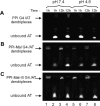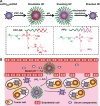Synthetic-polymer-assisted antisense oligonucleotide delivery: targeted approaches for precision disease treatment
- PMID: 40166479
- PMCID: PMC11956074
- DOI: 10.3762/bjnano.16.34
Synthetic-polymer-assisted antisense oligonucleotide delivery: targeted approaches for precision disease treatment
Abstract
This review explores the recent advancements in polymer-assisted delivery systems for antisense oligonucleotides (ASOs) and their potential in precision disease treatment. Synthetic polymers have shown significant promise in enhancing the delivery, stability, and therapeutic efficacy of ASOs by addressing key challenges such as cellular uptake, endosomal escape, and reducing cytotoxicity. The review highlights key studies from the past decade demonstrating how these polymers improve gene silencing efficiencies, particularly in cancer and neurodegenerative disease models. Despite the progress achieved, barriers such as immunogenicity, delivery limitations, and scalability still need to be overcome for broader clinical application. Emerging strategies, including stimuli-responsive polymers and advanced nanoparticle systems, offer potential solutions to these challenges. The review underscores the transformative potential of polymer-enhanced ASO delivery in personalised medicine, emphasising the importance of continued innovation to optimise ASO-based therapeutics for more precise and effective disease treatments.
Keywords: antisense oligonucleotides; enhanced delivery; gene transfection; intracellular uptake; locked nucleic acid (LNA); nanoparticles; peptide nucleic acid (PNA); personalised therapy; phosphorodiamidate morpholino oligomer (PMO); phosphorothioate (PS); polyplexes; ribose substitutions; small interfering RNA (siRNA); synthetic polymers; tricyclo-DNA (tcDNA).
Copyright © 2025, Alvarez et al.
Figures











References
Publication types
LinkOut - more resources
Full Text Sources
Miscellaneous
